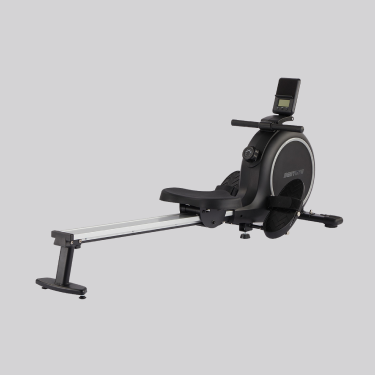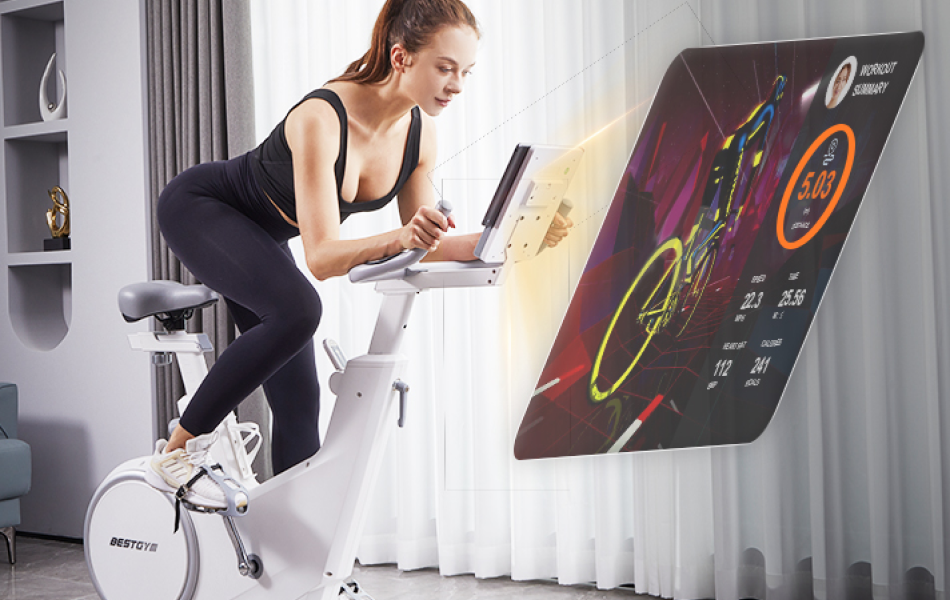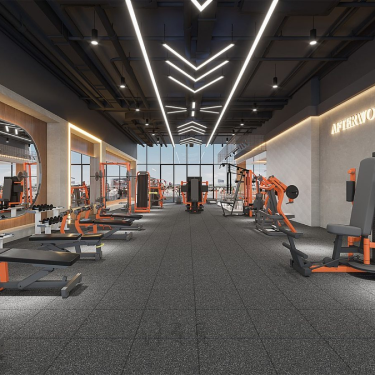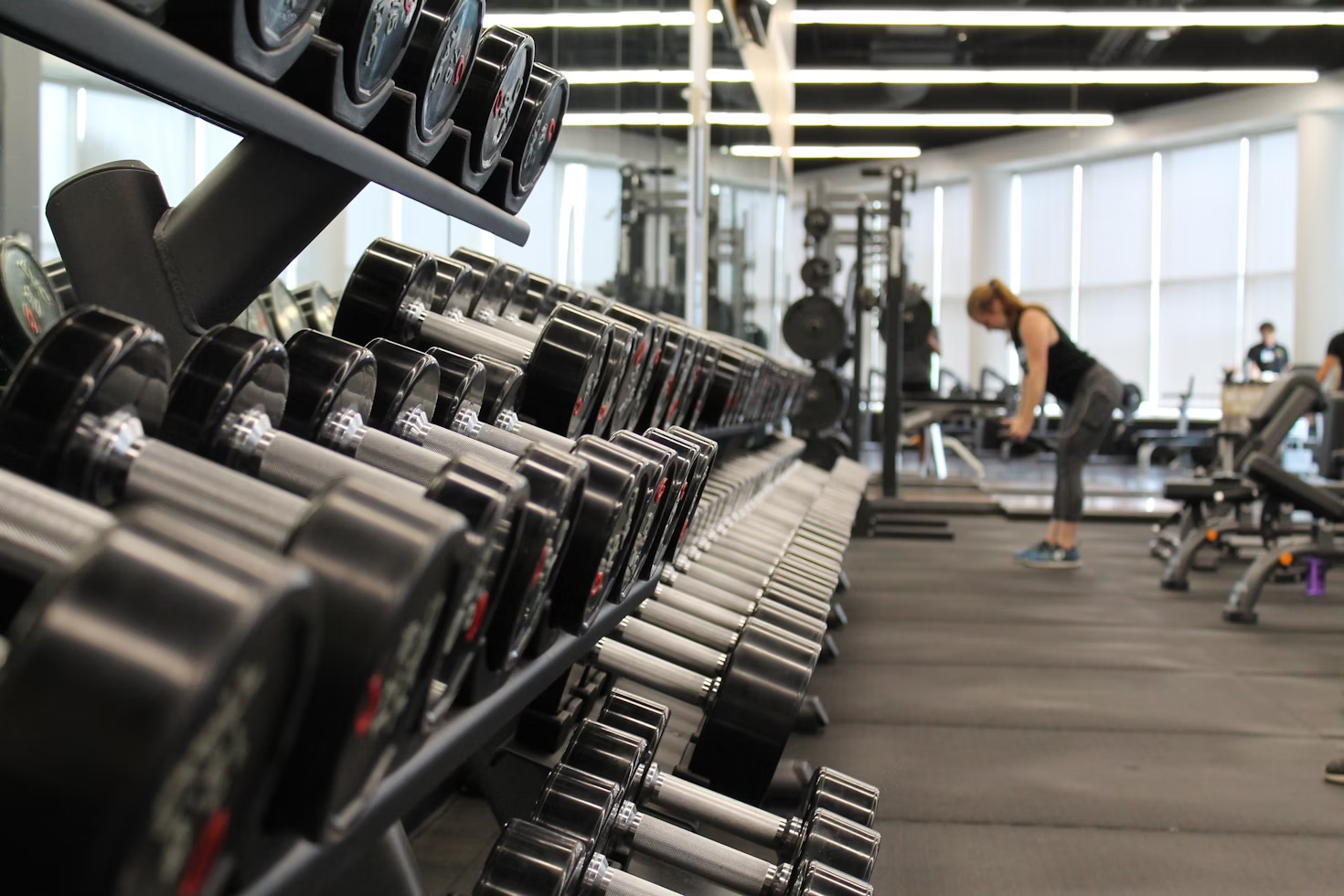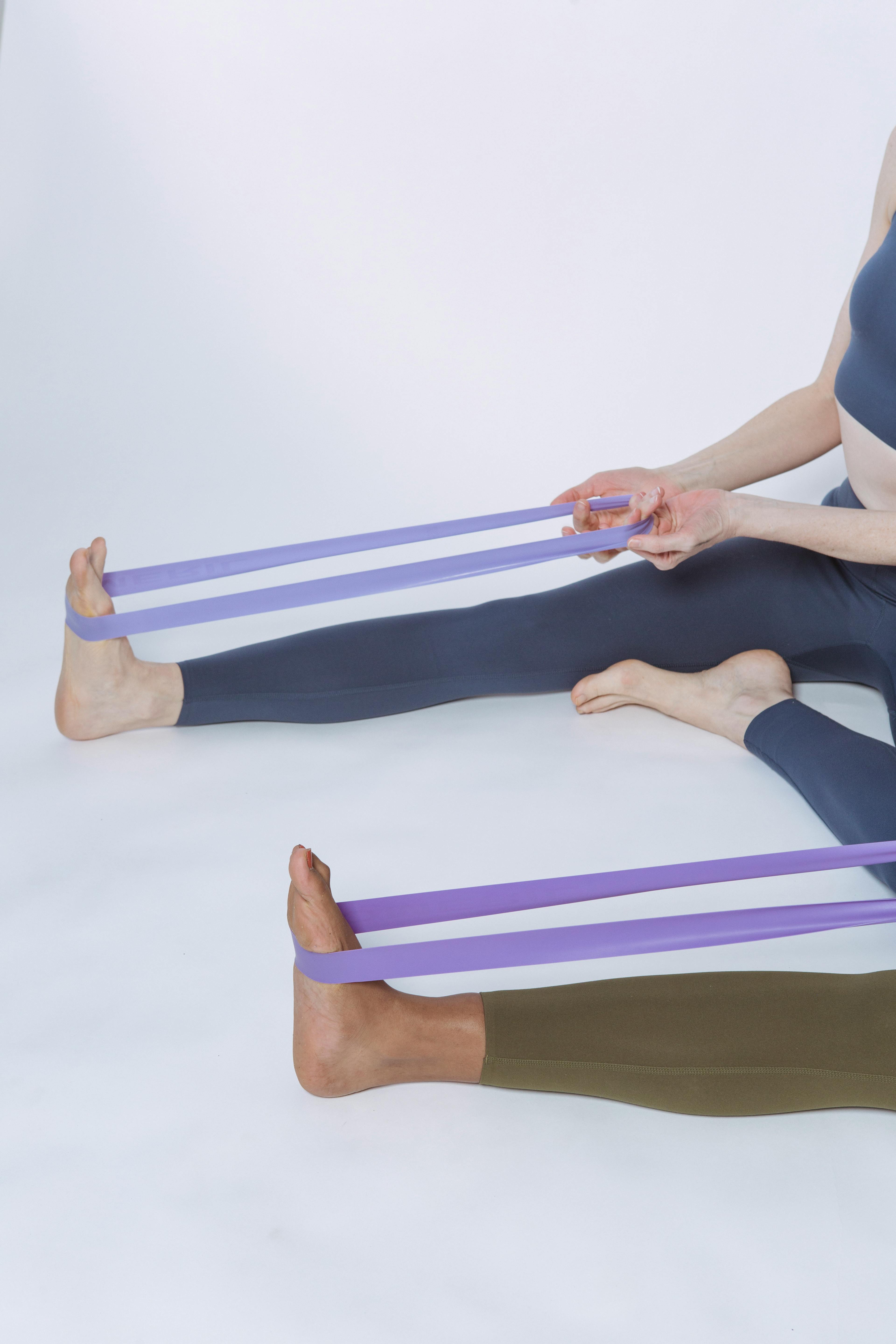The Current and Future Trends of the Physical Fitness Industry: From Home to Outdoors
The physical fitness industry is evolving at an unprecedented pace, driven by technological advancements, changing consumer preferences and the global shift towards healthier lifestyles. As we look to the future, several key trends are shaping the landscape of fitness, from sophisticated home fitness machines to innovative outdoor fitness equipment and exercise bikes with games. This article explores the current trends and future of the physical fitness industry, focusing on how these developments are transforming the way we approach physical workout. The author hopes to provide gym manufacturers and individuals with insights and suggestions to navigate and leverage these trends effectively.
Current Trends of the Physical Fitness Industry in 2024
In recent years, the landscape of the physical fitness industry has undergone a remarkable transformation. With advancements in technology and a growing awareness of the importance of health and wellness, individuals are increasingly seeking innovative ways to stay fit, whether it's within the comfort of their homes or amidst the serenity of the great outdoors.
The physical fitness industry in 2024 is experiencing several significant trends, reflecting broader societal changes and technological advancements.
What is the Future of the Fitness Industry?
The future of the fitness equipment market is poised to be more interconnected, personalized, and technology-driven than ever before. The pandemic accelerated the adoption of home fitness solutions, and this trend shows no signs of slowing down. In addition to traditional gyms, we are seeing a rise in hybrid models that combine in-person and virtual workouts. Fitness enthusiasts now have the flexibility to choose how, when, and where they exercise, whether outdoor fitness equipment, fitness machines for home, or in the gym.
Technological advancements, such as artificial intelligence (AI) and virtual reality (VR), are playing pivotal roles in shaping the future of fitness. AI-powered personal trainers provide customized workout plans and real-time feedback, enhancing the effectiveness of home workouts. Meanwhile, VR offers immersive fitness experiences that make exercising more engaging and enjoyable.
Fitness Machines for Home: A Growing Trend
Home fitness machines have become a staple in many households, offering the convenience and flexibility that traditional gyms cannot. Equipment like treadmills, rowing machines, and elliptical trainers are increasingly equipped with advanced features such as interactive screens, internet connectivity, and integrated fitness apps. These features allow users to stream live classes, track their progress, and stay motivated.
With the rise of fitness machines designed for home use, individuals can now enjoy the convenience of exercising within the confines of their own living spaces. From compact treadmills and elliptical exercise machines to state-of-the-art strength training systems, the options are endless. Fitness machines for home not only provide an effective means of staying in shape but also offer the flexibility to work out at any time, without having to adhere to the operating hours of a gym.
One of the most significant innovations in this space is the rise of smart fitness equipment. Company like BESTGYM have revolutionized home workouts with their connected fitness machines that offer live and on-demand classes. These machines not only provide high-quality workouts but also foster a sense of community through leaderboards and social features.
Outdoor Fitness Equipment: Embracing Nature's Gym
While home workouts offer unparalleled convenience, many individuals are also drawn to the allure of outdoor exercise. Whether it's jogging along scenic trails, practicing yoga in the park, or engaging in bodyweight exercises amidst nature's backdrop, outdoor fitness enthusiasts are reaping the benefits of fresh air and sunlight. In response to this growing demand, there has been a surge in the development of outdoor fitness equipment tailored to various environments, from urban parks to suburban neighborhoods.
As more people seek to combine fitness with the benefits of being outdoors, the demand for outdoor fitness equipment has surged. Public parks and recreational areas are increasingly equipped with a variety of fitness stations that cater to different exercise routines. From pull-up bars and parallel bars to outdoor treadmills and stationary bikes, this equipment encourages physical activity in natural settings.
Outdoor fitness equipment is designed to withstand various weather conditions, making it accessible year-round. It also promotes social interaction and community building, as people often gather in these spaces to exercise together. This trend is particularly appealing in urban areas where access to green spaces is limited, providing residents with convenient options to stay active.
Exercise Bike with Games: Making Workouts Fun
One of the most exciting trends in the fitness industry is the gamification of exercise. The integration of gaming elements into fitness equipment market, such as exercise bikes with games, has transformed mundane workouts into engaging experiences. These bikes come with screens that display immersive environments or competitive games, motivating users to pedal harder and longer.
In an age where digital distractions abound, integrating entertainment with exercise has become a popular trend. Exercise bikes with built-in gaming features exemplify this marriage of technology and fitness, offering users an immersive and interactive workout experience. Whether it's racing through virtual landscapes, competing in multiplayer challenges, or embarking on guided tours of scenic destinations, these exercise bikes make fitness fun and engaging.
Beyond entertainment, exercise bikes with games also serve as effective fitness tools, providing cardiovascular benefits and calorie-burning potential. By combining physical activity with mental stimulation, these innovative machines appeal to a broader audience, including those who may find traditional forms of exercise monotonous or uninspiring. As a result, they play a pivotal role in motivating individuals to stay active and committed to their fitness goals.
Athlete Fitness Equipment: Elevating Performance to New Heights
Professional athletes and fitness enthusiasts alike are benefiting from the advancements in athlete fitness equipment. These high-performance machines are designed to optimize training, improve performance, and reduce the risk of injury. Equipment such as advanced resistance training machines, smart weightlifting systems, and biomechanical analysis tools are becoming standard in training facilities.
Athlete fitness equipment is often integrated with technology that monitors and analyzes performance metrics. Wearable devices and sensors track everything from heart rate and muscle activation to movement patterns and recovery times. This data-driven approach allows athletes to fine-tune their training programs and achieve peak performance.
For athletes and fitness enthusiasts alike, achieving peak performance requires access to specialized equipment designed to enhance strength, agility, and endurance. From high-tech resistance training systems to cutting-edge recovery tools, athlete-inspired fitness equipment offers a competitive edge in pursuit of athletic excellence. These advancements in sports science and technology are not only reshaping the way athletes train but also trickling down to mainstream fitness enthusiasts seeking to elevate their workouts.
By incorporating principles of biomechanics, physiology and data analytics, athlete fitness equipment provides personalized training solutions tailored to individual needs and goals. Whether it's optimizing movement mechanics, preventing injuries, or accelerating recovery, these tools empower users to unleash their full potential and push beyond their limits. As the demand for performance-enhancing equipment continues to rise, the future of the fitness industry will undoubtedly be shaped by innovations that blur the lines between athleticism and accessibility.
Livestream Fitness: Real-Time Workouts for Modern Lifestyles
It is indeed emerging as a popular trend in the physical fitness industry. With advancements in technology and the widespread availability of high-speed internet, more people are turning to livestream workouts as a convenient way to stay active from the comfort of their own homes, which is the best way to use fitness machines for home. Liu Genghong is a great example of someone embracing the livestream fitness trend. As a fitness enthusiast and influencer, Liu Genghong has leveraged his social media platforms to livestream his workouts, providing followers with real-time access to his training sessions and fitness tips. By embracing livestream fitness, Liu Genghong not only reaches a wider audience but also demonstrates the effectiveness and convenience of working out from home. His approach showcases how livestreaming can be used to inspire and motivate others to prioritize their health and fitness goals.
Here's how it fits into the broader landscape of fitness and health industry trends:
1. Convenience and Accessibility: Livestream fitness offers unparalleled convenience, allowing users to access live workouts from anywhere with an internet connection. This accessibility is particularly appealing to individuals with busy schedules or those who prefer to exercise at home.
2. Real-Time Interaction: One of the key benefits of livestream fitness is the ability to interact with instructors and fellow participants in real-time. This creates a sense of community and accountability, similar to attending a group fitness class in person. Users can ask questions, receive feedback, and even connect with like-minded individuals from around the world.
3. Cost-Effective: Livestream fitness can be more cost-effective than traditional gym memberships or boutique fitness classes, as users often pay a monthly subscription fee for unlimited access to live and on-demand workouts. This makes it an attractive option for budget-conscious individuals or those looking to save on gym expenses.
Overall, livestream fitness complements existing trends in the physical fitness industry by offering a convenient, inclusive and technologically advanced way for people to prioritize their physical and mental well-being. As the popularity of livestream workouts continues to grow, we can expect to see further innovation and integration within the broader fitness landscape.
The Integration of Technology in Physical Fitness Industry
1. Personalized Fitness Plans
One of the key benefits of technological advancements in fitness is the ability to create personalized workout plans. AI algorithms analyze user data, such as fitness levels, goals, and preferences, to develop customized exercise routines. This personalization ensures that individuals receive workouts tailored to their specific needs, maximizing the effectiveness of their training.
2. Virtual and Augmented Reality
Virtual and augmented reality are set to revolutionize the fitness industry by providing immersive workout experiences. VR headsets can transport users to virtual environments where they can participate in interactive workouts, from cycling through scenic landscapes to boxing matches. Augmented reality (AR) can enhance outdoor workouts by overlaying digital information, such as running routes and real-time performance stats, onto the real world.
3. Social Connectivity and Community Building
Fitness technology is also enhancing social connectivity and community building. Many fitness apps and platforms feature social elements that allow users to connect with friends, join virtual workout groups and participate in challenges. This social aspect adds a layer of motivation and accountability, helping individuals stay committed to their fitness journeys.
The Future of Gyms and Fitness Centers
What is the future of the fitness industry? While home and outdoor fitness options are gaining popularity, gyms and fitness centers will continue to play a crucial role in the physical fitness industry. However, they will need to adapt to the changing landscape by incorporating technology and offering hybrid services. Virtual classes, on-demand workout programs, and digital memberships are some ways gyms can stay relevant and meet the evolving needs of their members.
Gyms are also investing in advanced equipment and facilities to provide unique experiences that cannot be replicated at home. Functional training zones, immersive group fitness classes, and wellness services such as recovery lounges and nutritional counseling are becoming standard offerings.
Incorporating Advanced Technology
Gyms are increasingly integrating advanced technology to enhance the workout experience and attract tech-savvy members. These technological advancements include:
1. Smart Equipment: Modern gyms are outfitting their spaces with smart fitness equipment that can track user performance and provide real-time feedback. This equipment often connects to apps and wearables, allowing members to monitor their progress and set personalized goals.
2. Virtual Reality Workouts: VR is being used to create immersive workout environments, such as virtual cycling through scenic landscapes or virtual boxing matches. This technology not only makes workouts more engaging but also offers unique experiences that can't be replicated at home.
3. AI-Powered Personal Trainers: AI personal trainers provide members with customized workout plans based on their fitness levels, goals, and preferences. These trainers can adjust routines in real-time, ensuring that members get the most out of their gym sessions.
Hybrid Fitness Models
To stay competitive, gyms are adopting hybrid fitness models that combine physical and digital offerings in physical fitness industry. This approach caters to the diverse needs of modern fitness enthusiasts who seek flexibility and convenience.
1. Virtual Classes: Many gyms now offer live-streamed and on-demand fitness classes. Members can join classes from home or on the go, maintaining their workout routines regardless of their location.
2. Digital Memberships: Digital memberships provide access to a wide range of online content, including workout videos, nutrition advice, and wellness tips. These memberships cater to individuals who prefer to exercise at home but still want the expertise and community feel of a gym.
3. Mobile Apps: Gym-specific apps allow members to book classes, track workouts, and access personalized training plans. These apps enhance the member experience by providing seamless access to gym services.
Enhancing In-Gym Experiences
To differentiate themselves from home and outdoor fitness equipment options, gyms are focusing on creating unique, in-gym experiences that add value to a membership, for example, exercise bike with games.
1. Functional Training Zones: These areas are equipped with a variety of equipment such as kettlebells, battle ropes and different kinds of exercise bikes, allowing for versatile and dynamic workouts. Functional training zones support a wide range of exercises that can be tailored to different fitness levels.
2. Immersive Group Fitness Classes: Group fitness classes are being reimagined with the help of advanced audiovisual technology. For example, spinning classes might feature large screens displaying virtual cycling routes, while yoga classes could incorporate ambient soundscapes to enhance relaxation.
3. Wellness Services: Many gyms are expanding their offerings to include wellness services such as recovery lounges, massage therapy, and nutritional counseling. These services address the holistic health needs of members, promoting overall well-being.
Community and Social Interaction
In physical fitness industry, building a sense of community is vital for gyms to retain members and foster long-term engagement. Social interaction enhances the overall gym experience and provides members with additional motivation.
1. Social Events and Challenges: Hosting social events, fitness challenges, and competitions can help build a strong community within the gym. These activities encourage members to interact, support each other, and stay motivated.
2. Member Clubs and Interest Groups: Gyms can establish clubs or groups based on common interests, such as running clubs, hiking groups, or sports leagues. These groups provide additional opportunities for members to connect and engage in physical activities together.
3. Online Communities: Creating online forums or social media groups allows members to stay connected outside of the gym. These platforms can be used to share progress, offer support, and organize meetups.
Recommendations for Sustainable Practices
As environmental consciousness grows, gyms are also focusing on sustainability to appeal to eco-minded consumers in physical fitness industry.
1. Eco-Friendly Facilities: Gyms are investing in sustainable infrastructure, such as energy-efficient lighting, water-saving fixtures, and eco-friendly building materials. These practices reduce the environmental impact and attract members who prioritize sustainability.
2. Green Initiatives: Implementing green initiatives, such as recycling programs, paperless operations, and promoting the use of reusable water bottles, demonstrates a gym's commitment to environmental responsibility.
The Ways to Personalization and Customization
Offering personalized experiences is crucial for attracting and retaining members in the competitive physical fitness industry.
1. Customized Workout Plans: Utilizing member data, gyms can create personalized workout plans that align with individual fitness goals and preferences. These plans can be adjusted based on progress and feedback.
2. Personal Training: One-on-one personal training sessions offer tailored guidance and support, helping members achieve their specific fitness objectives. Personal trainers can also provide motivation and accountability.
3. Specialized Programs: Gyms can offer specialized programs targeting specific demographics, such as senior fitness classes, prenatal workouts, or rehabilitation programs. These programs address the unique needs of different member groups.
The future of gyms and fitness centers lies in their ability to adapt to the evolving fitness landscape by incorporating advanced technology, offering hybrid models, enhancing in-gym experiences, fostering community and committing to sustainability. By embracing these changes, gyms can continue to play a crucial role in helping individuals achieve their fitness goals and maintain a healthy lifestyle among physical fitness industry.
Read more: Exploring 7 Best Kinds of Stationary Bikes and Their Benefits
In conclusion, the future of the physical fitness industry is marked by innovation, accessibility, and integration. From the convenience of home fitness machines to the allure of outdoor exercise, individuals have more options than ever to pursue their health and wellness goals. The integration of entertainment with exercise, exemplified by exercise bikes with games, makes fitness more engaging and enjoyable. Meanwhile, athlete-inspired fitness equipment raises the bar for performance enhancement, catering to the needs of both elite athletes and everyday fitness enthusiasts. As technology continues to advance and our understanding of human physiology evolves, the possibilities for the future of fitness are limitless. Whether it's at home, outdoors, or in the gym of the future, one thing is certain: the pursuit of health and fitness will always be a journey worth embarking on.


